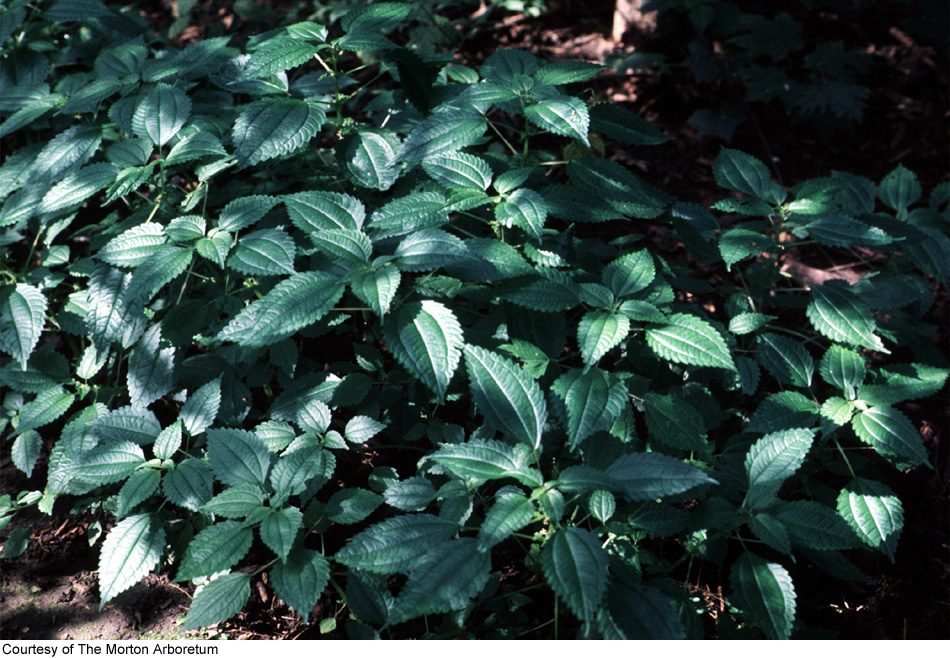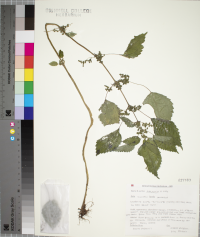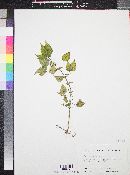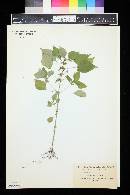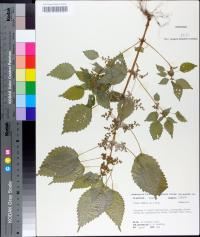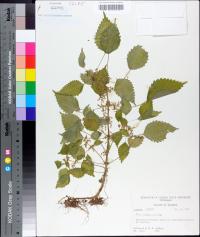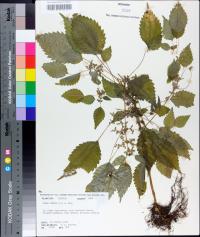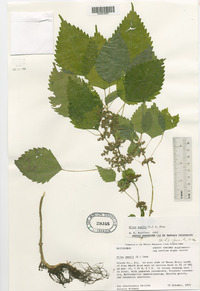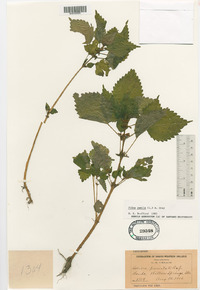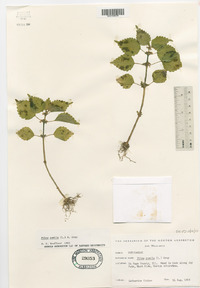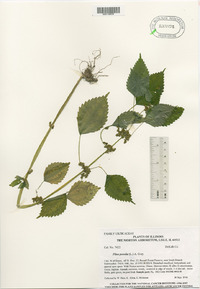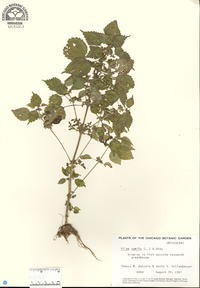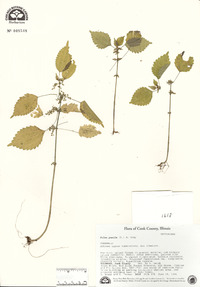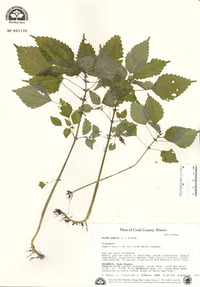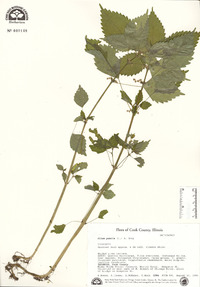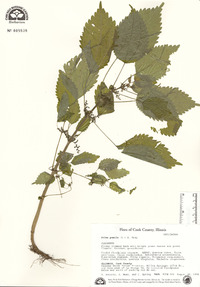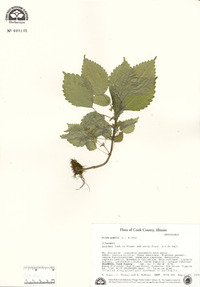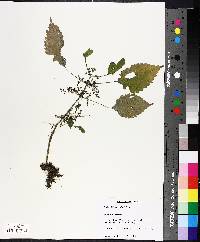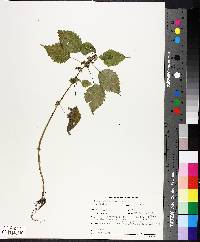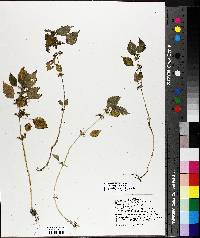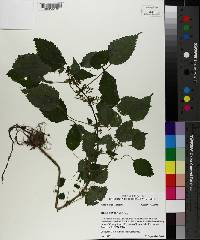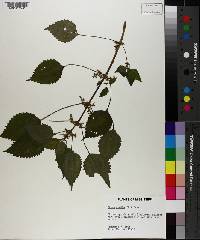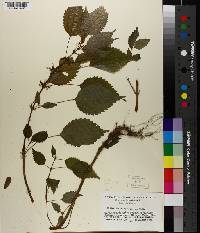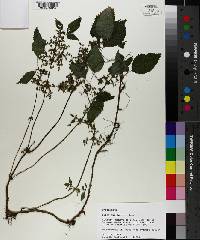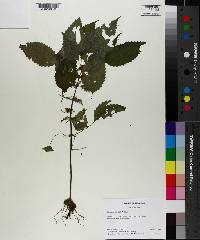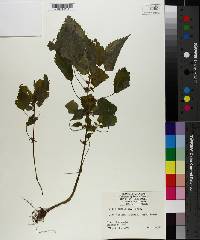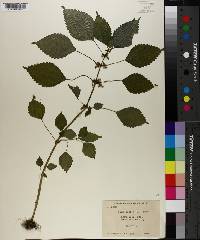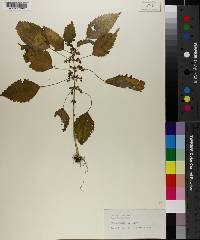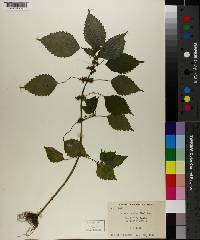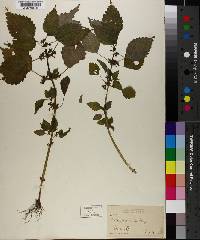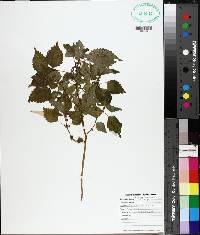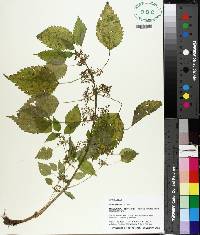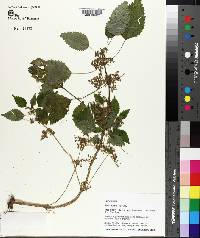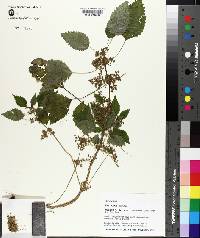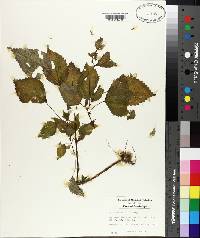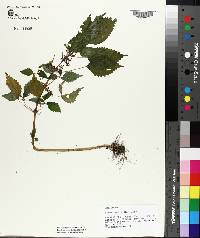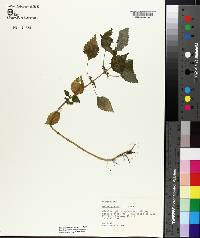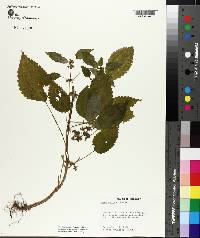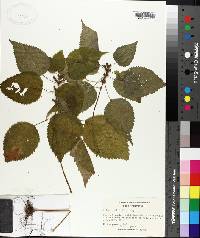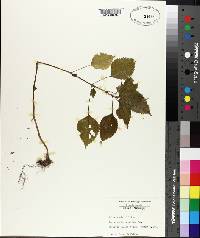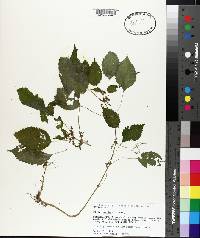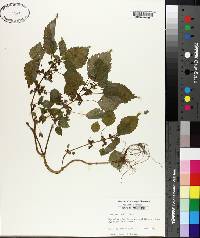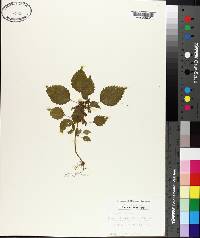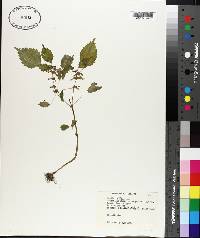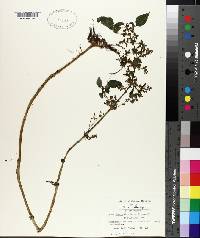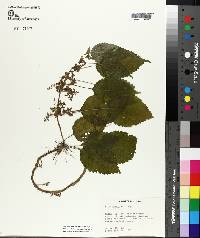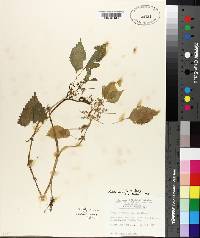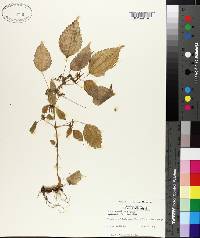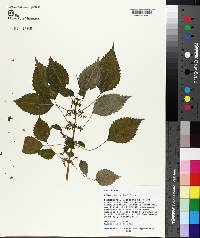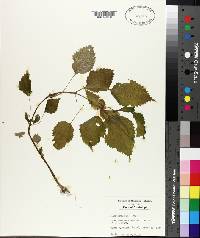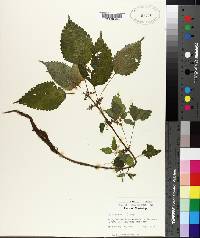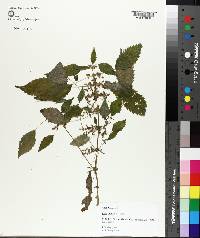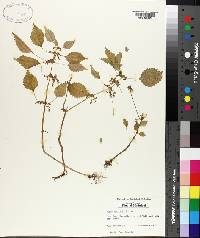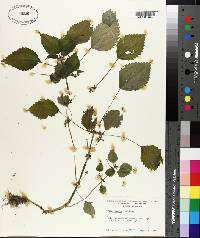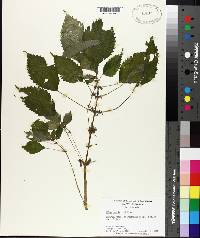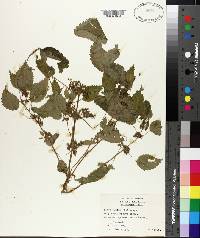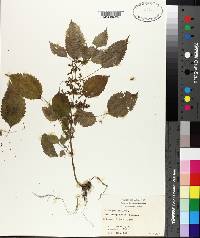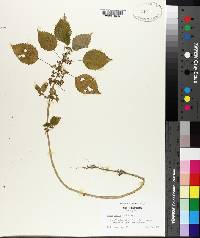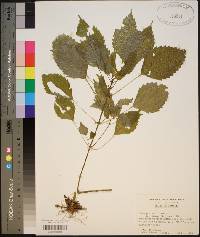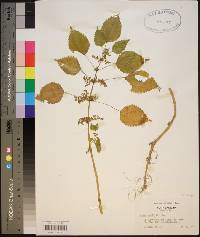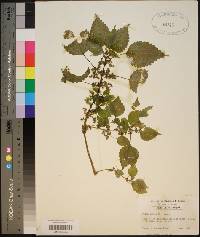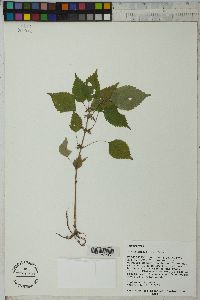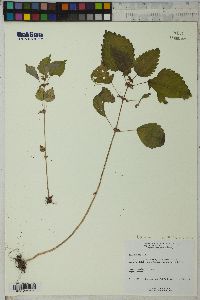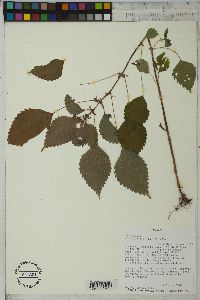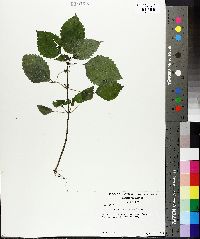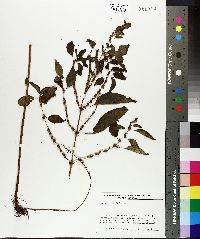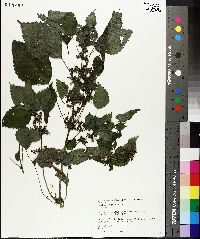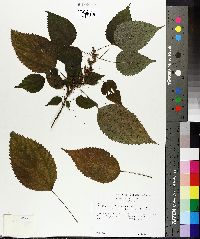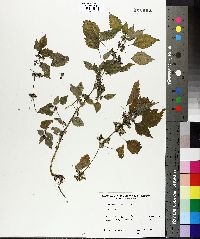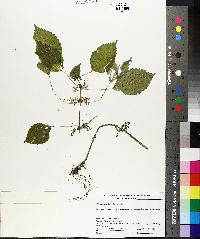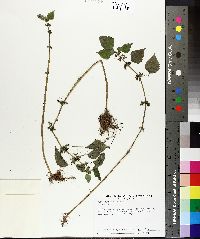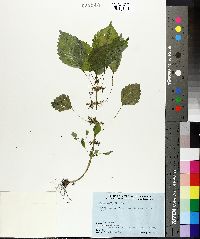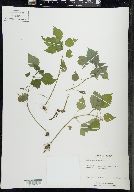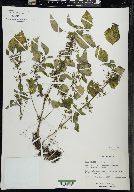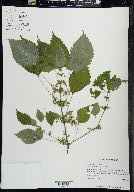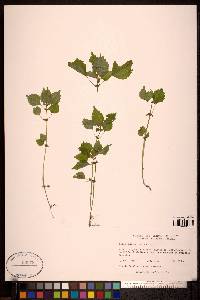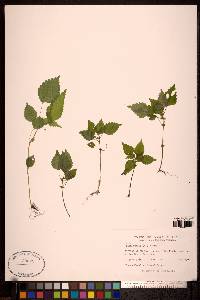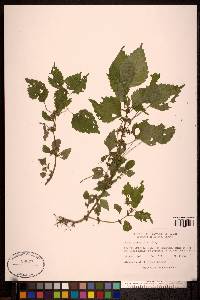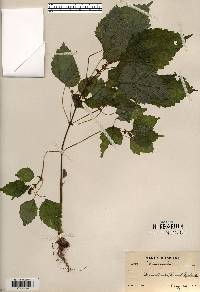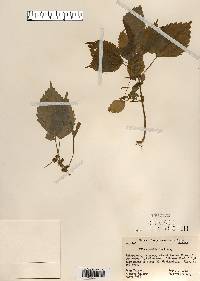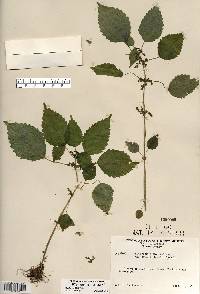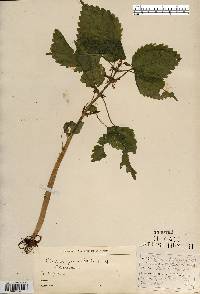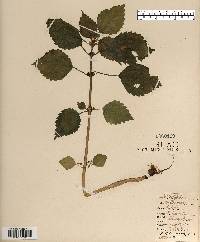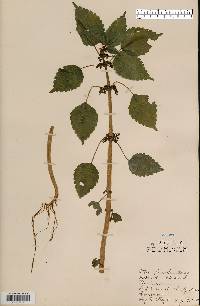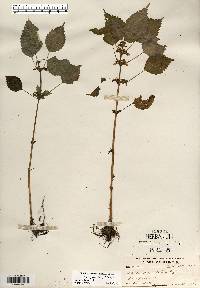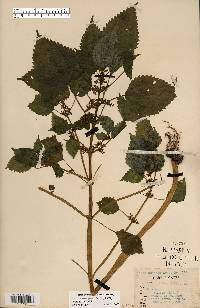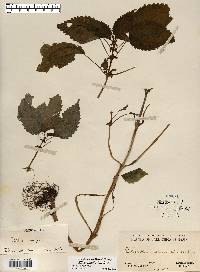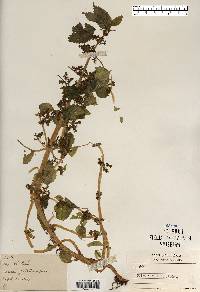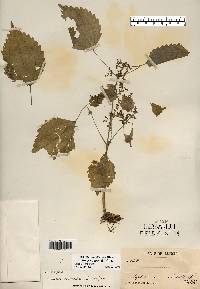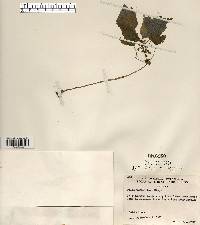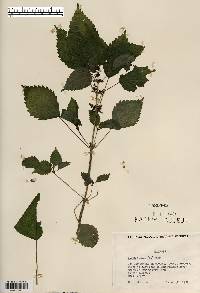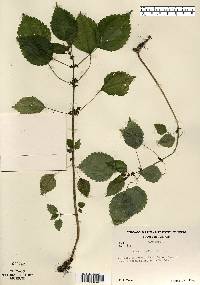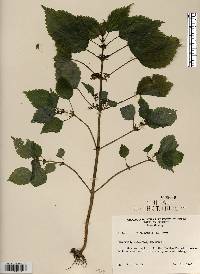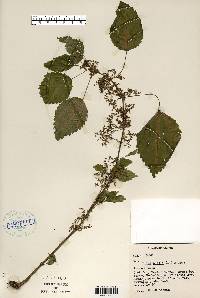Pilea pumila
|
|
|
|
Family: Urticaceae
Canadian Clearweed
[Adicea deamii Lunell, morePilea mongolica] |
Herbs , 0.7-7 dm. Stems simple, erect. Leaf blades elliptic to broadly elliptic or ovate, paired blades equal, 2-13 × 1-9 cm, margins dentate. Inflorescences crowded to lax. Flowers ca. 1 mm across. Achenes uniformly light colored or with streaks of purple, compressed, teardrop-shaped, 1.3-1.7 × 0.6-1.1 mm, smooth or purple striations sometimes raised. 2 n = 24, 26. Flowering summer-fall. Moist to wet woods, woodland margins, along streams, shaded waste places; 0-2000 m; N.B., Ont., P.E.I., Que.; Ala., Ark., Conn., Del., D.C., Fla., Ga., Ill., Ind., Iowa, Kans., Ky., La., Maine, Md., Mass., Mich., Minn., Miss., Mo., Nebr., N.H., N.J., N.Y., N.C., N.Dak., Ohio, Okla., Pa., R.I., S.C., S.Dak., Tenn., Tex., Vt., Va., W.Va., Wis.; Asia. Typical plants have leaf blades with cuneate bases and 3-11 rounded teeth on each margin; plants with rounded leaf bases and 11-17 less rounded or acute teeth on each margin have been called Pilea pumila var. deamii (Lunell) Fernald (M. L. Fernald 1936) [ Adicea deamii Lunell, Amer. Midl. Naturalist 3: 10. 1913.]. Typical P . pumila also is found in eastern Asia, where three infraspecific taxa, P . pumila var. pumila , P . pumila var. hamaoi (Makino) C. J. Chen, and P . pumila var. obtusifolia C. J. Chen are recognized. This complex, which also includes P . pauciflora C. J. Chen, has been placed in Pilea series Pumilae C. J. Chen. Although the Asian plants are often vegetatively and florally indistinguishable from the North American plants, minor differences do occur in the achenes, especially in their markings and sculpturing when mature. Detailed studies are needed to clarify exact relationships. Native Americans used Pilea pumila medicinally to alleviate itching, to cure sinus problems, and to treat excessive hunger (D. E. Moerman 1986)
Annual herb 7 cm - 0.7 m tall Stem: erect and unbranched. Leaves: opposite, long-stalked, 2 - 13 cm long, 1 - 9 cm across, elliptic to egg-shaped with a wedge-shaped base, toothed, usually hairless. Flowers: either male or female, found on the same plant (monoecious), borne axillary in a flat-topped inflorescence of both male and female flowers, subtended by bracts, about 1 mm across. The male flowers have four tepals and four stamens, while the female flowers have three tepals and sterile stamens. Fruit: an achene, pale green and sometimes purplish streaked, 1.3 - 1.7 mm long, 0.6 - 1.1 mm across, teardrop-shaped, smooth or sometimes with the purple streaks raised. The achene is ejected when mature. Similar species: Boehmeria cylindrica and Parietaria pensylvanica have flexible, non-stinging hairs, and Laportea canadensis and Urtica dioica both have stiff, stinging hairs and flexible, non-stinging hairs. Pilea fontana is distinguished by its black, warty achene. Flowering: late July to early October Habitat and ecology: Common in cool, moist, shaded areas such as rock canyons, wooded moist depressions, shaded floodplains, or under bridges. Occurence in the Chicago region: native Etymology: Pilea comes from the Greek word pilos, meaning cap, referring to the achene being covered by the longer sepal of some species in the genus. Pumila means dwarf. Author: The Morton Arboretum Annual, very smooth and pellucid, 1-5 dm; lvs long-petioled, shining, ovate, 3-12 cm, serrate or crenate-serrate, broadly cuneate to rounded at base, usually glabrous, 3-nerved from the base, the nerves narrowly winged; terminal lf-tooth elongate; cymes 5-30 mm from the middle and upper axils; cal-lobes equal or nearly so; achenes pale green, usually with slightly raised purple spots, 1.3-2 mm, 55-70% as wide as long; seed smooth. Moist, rich, shaded soil, often in colonies; Que. to Minn., s. to Fla., La., and Okla. July-Sept. (Adicea p.) Northeastern plants have the lvs sharply cuneate at base, with 11 or fewer rounded teeth on each side. Toward the s. and w. the lf-base tends to be more rounded, and the teeth sharper and more numerous; this poorly defined phase has been called var. deamii (Lunell) Fernald. Gleason, Henry A. & Cronquist, Arthur J. 1991. Manual of vascular plants of northeastern United States and adjacent Canada. lxxv + 910 pp. ©The New York Botanical Garden. All rights reserved. Used by permission. From Flora of Indiana (1940) by Charles C. Deam This plant prefers a cool, shady place in which to grow and is found in moist, rich soil throughout the state. I once found it growing on an old cypress log in a cypress swamp in Posey County. It is usually found in colonies and when a colony in rich soil is studied it will be found that the plants that are crowded are simple or with few branches at the top while those on the outside of the colony may have long branches even to the ground. Single plants in a similar habitat may be so large that they become decumbent half their length and have side branches that are nearly as long as the remainder of the main stem. The plants are variable in all their parts; the branches at the base may be short or long; the leaves are usually cuneate at the base although I have a specimen with leaves that are truncate at the base; the teeth of the margins vary from 3-17 on a side and vary from rounded to rather sharply serrate or the margins of the lower leaves are sometimes entire; the fruits vary in size and in the amount of brown markings and are of a greenish color. My no. 48006 from Crawford County, Oct. 2, 1929, and two just like it from Clark County have purplish fruits, but the inside of the pericarp is white and they lack the white margins of Pilea fontana. In a dry season I collected in the bottom of a pond a sheet of depauperate plants only a few inches high. These were named for me by a specialist as typical Pilea pumila (L.) Gray. Two years later I revisited the same pond when it was full of water and I found only large plants about the pond. Like all annuals delayed germination or lack of moisture produces small or dwarf plants. My collection of 132 sheets from Indiana shows the above variations and others not mentioned. …… Indiana Coefficient of Conservatism: C = 2 Wetland Indicator Status: FACW |

